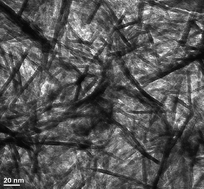Self-assembled calcium phosphate nanocomposites using block copolypeptide templates†
Abstract

* Corresponding authors
a
Ames Laboratory and Iowa State University, 3035 Sweeney Hall, Ames, IA, USA
E-mail:
suryakm@iastate.edu
b Ames Laboratory, Ames, IA, USA
c Department of Bioengineering, University of California, Los Angeles, CA, USA
d Advanced Photon Source, Argonne National Laboratory, 9700 S. Cass Ave, Argonne, IL, USA

 Please wait while we load your content...
Something went wrong. Try again?
Please wait while we load your content...
Something went wrong. Try again?
Y. Hu, Y. Yusufoglu, M. Kanapathipillai, C. Yang, Y. Wu, P. Thiyagarajan, T. Deming, M. Akinc, K. Schmidt-Rohr and S. Mallapragada, Soft Matter, 2009, 5, 4311 DOI: 10.1039/B904440J
To request permission to reproduce material from this article, please go to the Copyright Clearance Center request page.
If you are an author contributing to an RSC publication, you do not need to request permission provided correct acknowledgement is given.
If you are the author of this article, you do not need to request permission to reproduce figures and diagrams provided correct acknowledgement is given. If you want to reproduce the whole article in a third-party publication (excluding your thesis/dissertation for which permission is not required) please go to the Copyright Clearance Center request page.
Read more about how to correctly acknowledge RSC content.
 Fetching data from CrossRef.
Fetching data from CrossRef.
This may take some time to load.
Loading related content
